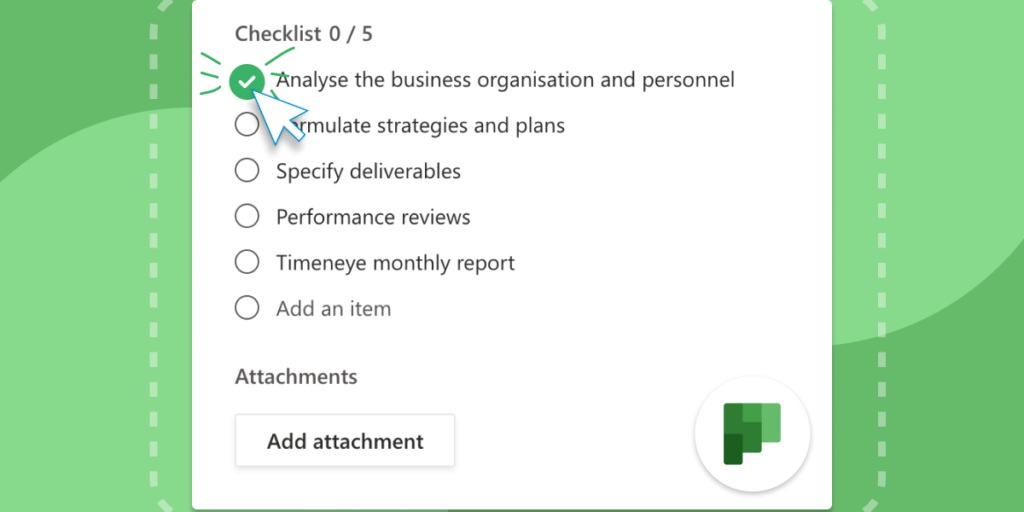Project management often involves handling complex tasks. These tasks can overwhelm even experienced managers.
Breaking down these tasks is essential for success. Managing a project with many moving parts is challenging. You need to organize, plan, and execute each part effectively. This guide will help you break down complex tasks into manageable steps. You will learn strategies to simplify your work, improve your team’s efficiency, and meet deadlines.
Understanding these techniques can make a big difference in your project outcomes. Stay with us to explore these valuable insights for project managers.
Table of Contents
ToggleIntroduction To Complex Tasks
Project managers often face complex tasks. These tasks can overwhelm teams. They come with many moving parts and dependencies. Understanding complex tasks is crucial. It helps in delivering successful projects.
Importance Of Task Breakdown
Breaking down tasks is essential. It makes complex tasks manageable. Smaller tasks are easier to understand. They are also easier to assign. Each team member knows their responsibilities. This clarity boosts productivity.
Task breakdown also reveals dependencies. It shows which tasks rely on others. This helps in planning. It ensures smooth workflow. Teams can address potential issues early. This proactive approach saves time and resources.
Impact On Project Success
Effective task breakdown leads to project success. It ensures teams work efficiently. They meet deadlines. Projects stay within budget. Clear tasks help in tracking progress. Managers can identify delays early. They can take corrective actions promptly.
Task breakdown improves communication. Teams understand the project’s scope. They see the big picture. This understanding fosters collaboration. It aligns everyone towards common goals. Ultimately, it leads to successful project completion.

Credit: www.projectmanager.com
Identifying Complex Tasks
In project management, breaking down complex tasks is essential. It helps in managing the project efficiently. Identifying complex tasks early makes the planning process smoother. It ensures that resources and time are allocated properly.
Many project managers struggle to identify complex tasks. This guide will help you understand what makes a task complex. It will also provide common examples found in projects.
Characteristics Of Complexity
Complex tasks usually have multiple components. They often require input from various team members. These tasks may also have dependencies on other tasks. The sequence of steps is crucial for their success. Complex tasks often involve a high level of uncertainty. They require thorough planning and constant monitoring. They can also be time-consuming and resource-intensive.
Common Examples In Projects
One common example is developing new software. This task involves coding, testing, and deployment. Another example is organizing a large event. It requires coordination with vendors, managing attendees, and logistics. Building a new product is also complex. It involves design, prototyping, and manufacturing. Implementing a new system in a company can be complex as well. It requires training employees and integrating with existing systems.
Steps To Break Down Tasks
Breaking down complex tasks is essential for efficient project management. It simplifies workflows and ensures clarity. Let’s explore the steps to break down tasks effectively. This guide will help project managers streamline their processes.
Initial Assessment
Start with an initial assessment of the task. Understand the main goal. Identify the key components. Look at the overall scope. This helps in understanding the complexity. Gather necessary information. Consult with team members if needed. This step sets the foundation for the next phases.
Creating Subtasks
After the assessment, create subtasks. Divide the main task into smaller, manageable parts. Each subtask should be clear and specific. Assign deadlines and responsibilities. Ensure each subtask has a clear outcome. This makes tracking progress easier. Regularly review and adjust if necessary.
Tools For Task Management
Effective task management is crucial for project managers. The right tools can make a big difference. They help break down complex tasks into smaller, manageable parts. Let’s explore some tools that can aid in task management.
Project Management Software
Project management software is essential for tracking progress. These tools help organize tasks, set deadlines, and assign responsibilities. They provide a clear overview of the project’s status. Some popular options include:
- Trello – Visual boards for easy task tracking.
- Asana – Task lists and timelines for project planning.
- Jira – Ideal for agile project management.
These tools often come with features like:
- Task prioritization
- Time tracking
- Progress reports
Using project management software can improve efficiency and ensure that deadlines are met.
Collaboration Platforms
Collaboration platforms are vital for team communication. They allow team members to share updates and feedback in real-time. This ensures everyone stays on the same page. Some effective collaboration platforms include:
- Slack – Channels for organized team communication.
- Microsoft Teams – Integrates with Office 365 for seamless collaboration.
- Zoom – Video conferencing for virtual meetings.
These platforms often feature:
- Instant messaging
- File sharing
- Video calls
They help in maintaining clear communication and quick decision-making. This is critical for the success of any project.
Prioritizing Subtasks
Prioritizing subtasks is crucial for effective project management. It ensures that the team focuses on the most important activities first. This approach helps in achieving project goals efficiently and on time. By setting clear priorities, project managers can keep the team aligned and motivated.
Setting Priorities
Setting priorities involves identifying which tasks need immediate attention. Start by listing all the subtasks. Then, evaluate their urgency and importance. This step helps in deciding which tasks should be tackled first. Focus on tasks that have a significant impact on the project.
Using Prioritization Frameworks
Prioritization frameworks are tools that help in organizing tasks. One popular framework is the Eisenhower Matrix. This method divides tasks into four categories: urgent and important, important but not urgent, urgent but not important, and neither urgent nor important. Another useful framework is the MoSCoW method. It categorizes tasks into must-have, should-have, could-have, and won’t-have categories.
Using these frameworks, project managers can systematically evaluate tasks. This ensures that the most critical tasks get the attention they deserve. It also helps in managing time and resources effectively. Ultimately, it leads to better project outcomes.

Credit: www.wrike.com
Assigning Responsibilities
Assigning responsibilities is a key part of project management. It ensures each team member knows their tasks and can perform them effectively. Clear roles and responsibilities can lead to increased productivity and better outcomes.
Delegation Techniques
Effective delegation is crucial. It involves assigning tasks based on skills and availability. Here are some techniques:
- Assess Team Strengths: Know your team’s skills and expertise.
- Set Clear Goals: Define what needs to be achieved.
- Provide Resources: Ensure access to tools and information.
- Monitor Progress: Regularly check on task completion.
- Give Feedback: Offer constructive criticism and praise.
These techniques help in allocating tasks efficiently and ensuring project success.
Team Role Allocation
Allocating roles involves assigning specific responsibilities to team members. This can be done by:
- Identifying Project Needs: Understand the project’s requirements.
- Matching Skills to Tasks: Assign tasks to those best suited for them.
- Defining Clear Roles: Ensure each team member knows their role.
- Encouraging Collaboration: Promote teamwork for better results.
Consider the following table for a clear role allocation example:
| Role | Responsibility |
|---|---|
| Project Manager | Oversee project progress and manage resources. |
| Developer | Write and test code. |
| Designer | Create design layouts and visuals. |
| Tester | Ensure the product meets quality standards. |
Clear role allocation is vital for project success. It helps in managing tasks and ensuring accountability.
Monitoring Progress
Monitoring progress is crucial for project managers. It ensures tasks are on track, resources are used efficiently, and goals are met. By keeping a close eye on progress, project managers can spot issues early and adjust plans as needed. Let’s explore two key methods for monitoring progress: tracking tools and regular check-ins.
Tracking Tools
Tracking tools help project managers stay organized. Tools like Trello, Asana, and Microsoft Project offer various features. These tools allow you to assign tasks, set deadlines, and monitor progress. Visual dashboards and reports provide quick updates. They help keep the team informed and focused.
Gantt charts are also useful. They show task timelines and dependencies. This helps in visualizing the entire project. Use tracking tools to ensure all team members know their responsibilities. Clear visibility helps avoid delays.
Regular Check-ins
Regular check-ins are essential. They keep the team aligned and motivated. Schedule weekly or bi-weekly meetings to discuss progress. These meetings should be brief and focused. Address any issues or roadblocks. Encourage team members to share updates and feedback.
Use these check-ins to review goals and adjust plans. Ensure everyone is aware of their tasks and deadlines. Regular communication helps build trust and accountability. It also promotes a collaborative work environment. Make check-ins a priority to keep your project on track.

Credit: www.wrike.com
Adjusting Plans
Project management often requires adjusting plans to keep everything on track. Being prepared to alter the course is crucial. This section will explain how to stay flexible and handle unexpected changes effectively.
Flexibility In Management
A project manager must embrace flexibility. Plans often change due to unforeseen factors. Flexibility helps in adapting to new situations. Here are some tips to ensure flexibility:
- Regularly review project progress.
- Encourage open communication among team members.
- Identify potential risks early.
- Be open to feedback and suggestions.
Being flexible means being ready to adjust timelines, resources, and tasks. It also involves having a backup plan. This approach helps in maintaining project momentum even when things go awry.
Handling Unexpected Changes
Unexpected changes are a part of any project. They can stem from various sources like client demands, resource availability, or technical issues. To handle these changes, follow these steps:
- Assess the impact of the change.
- Communicate with stakeholders about the changes.
- Update the project plan accordingly.
- Reallocate resources if necessary.
- Monitor the implementation of changes.
Effective change management ensures that the project remains on track. It also minimizes disruptions and keeps the team focused. Remember, the ability to handle unexpected changes is a key skill for any project manager.
Case Studies
Understanding how other project managers break down complex tasks can provide valuable insights. Case studies offer real-world examples that demonstrate successful task breakdown strategies. They also highlight lessons learned from these experiences. This section will explore two key areas: Successful Task Breakdown and Lessons Learned.
Successful Task Breakdown
Let’s examine two companies that excelled in breaking down complex tasks.
| Company | Project | Task Breakdown | Outcome |
|---|---|---|---|
| Tech Innovators | New App Development |
|
App launched on time and within budget. |
| Green Solutions | Sustainability Initiative |
|
Achieved 20% reduction in carbon footprint. |
Lessons Learned
Every project offers lessons that can improve future task breakdowns. Here are some key takeaways from the case studies:
- Clear Objectives: Define clear and achievable goals.
- Detailed Planning: Break tasks into smaller, manageable steps.
- Regular Monitoring: Track progress and adjust as needed.
- Team Communication: Ensure constant communication among team members.
- Flexibility: Be ready to adapt to changes.
By studying these case studies, project managers can learn effective strategies for breaking down complex tasks. This knowledge can lead to more successful project outcomes.
Frequently Asked Questions
What Are Complex Tasks In Project Management?
Complex tasks involve multiple interdependent steps and require coordination among team members. They often have high stakes and tight deadlines, demanding meticulous planning and execution.
How Can Project Managers Simplify Complex Tasks?
Project managers can simplify complex tasks by breaking them down into smaller, manageable subtasks. This makes it easier to assign responsibilities, track progress, and meet deadlines.
Why Is Task Delegation Important?
Task delegation is crucial for project success. It ensures that tasks are completed efficiently by leveraging the strengths and expertise of team members.
What Tools Help In Managing Complex Tasks?
Tools like Gantt charts, Kanban boards, and project management software help in visualizing, organizing, and tracking complex tasks effectively.
Conclusion
Breaking down complex tasks is key for project success. This guide provides clear steps. Use these strategies to simplify projects. Your team will work more efficiently. Tasks will feel less overwhelming. Better organization leads to better results. Stay focused and communicate well.
By doing so, you’ll manage projects smoothly. Keep refining your approach. Adapt as needed. Your projects will thrive with these methods. Happy managing!







